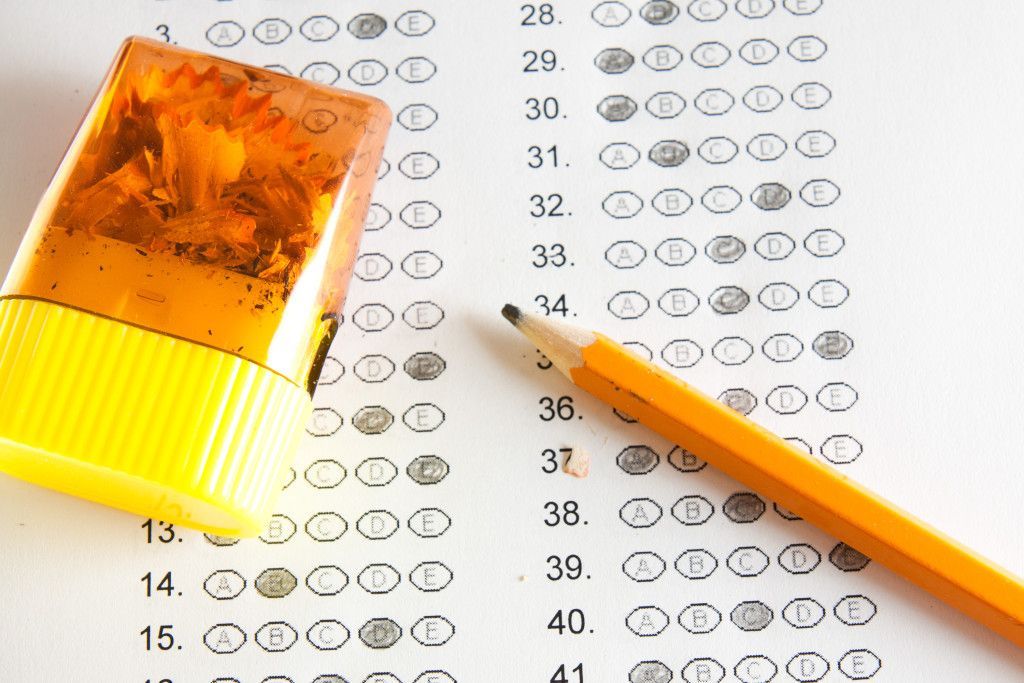TEST TAKING ANXIETY — PART ONE: IDENTIFY & PLAN
This week, I will be presenting a four-part series on test taking anxiety. Be sure to check back each day for the next installment. Or, if you’d rather, subscribe to our blog on the sidebar and have the next post delivered right to your inbox. Happy reading!
Preparing for testing season is enough to make anybody nervous. Whether you are a teacher, a parent, or a students, there are bound to be some butterflies when you hear acronyms like SAT, ACT, PRAXIS, PARCC, OAA, etc. Generally, a little bit of nervousness is good – it is your body’s way of telling you that this is important to you and you want to succeed.

But what if it’s more than a few nerves? What if your student feels nauseous, cannot concentrate, or is constantly complaining about how difficult the test is going to be? These could be signs of something more severe than typical nerves – test taking anxiety.
Many people experience anxiety before major life events and it is not uncommon for students to be nervous before a test. In most cases, test taking anxiety is not severe. More often than not, it is typically a case of “mind over matter”. With a little bit of self-help, students can teach themselves to combat their anxiety and stress.
Educational Testing Services, more commonly known as ETS, has been making standardized tests for more than 60 years. According to their website, the nonprofit organization administers and scores more than 50 million tests every year – including the GRE and the PRAXIS. In 2005, the organization released a guide called “Reducing Test Anxiety” to help students combat with the stress of exams. Despite that the guide was published 10 years ago, the information is still relevant and applicable to students of all ages – including those in high school and middle school.1, 2
In their guide, the ETS defines two specific types of test anxiety – head (mental) and body (physical). Each of these types of anxiety has its own unique symptoms. Someone experiencing mental test anxiety spends too much time worrying about the exam, the outcome, and may even be prone to forgetting information when looking at the test. Someone experiencing physical test anxiety may be dealing with headaches, a rapid heart rate, or an upset stomach. These are just some of the symptoms of test anxiety.
The first step in treating test anxiety is a self-diagnosis. Does your student experience more of one kind of symptom, or do they experience both?
When I was in college and preparing for the PRAXIS test, I remember experiencing a lot of test anxiety. I was always concerned that I would not meet my own expectations and would let my family down. “What if I don’t pass?” I remember experiencing some pretty dreadful chest pains because my heart was beating so quickly and I can recall dealing with a stomach ache that morning, too. These were all signs of mental and physical nerves, of test taking anxiety.
So, after you have helped your student discover how he or she experiences anxiety, what is the next step? According to the ETS guide, you need three things to succeed: “preparation, organization, and practice”.2
1. PREPARATION
It comes as no surprise that the more prepared you are for an exam, the less anxiety you will feel. Help your student research the upcoming exam to learn more about it. The ETS guide says that one of the keys to success is to define fact from fiction and debunk common myths about the exam. Take some time to research the exam itself – the time limit, the types of questions, the penalties (if any) for guessing, etc. By studying the structure of the test, your student will feel some relief.
2. ORGANIZATION
Staying organized will help your student stay focused on success and not on failure. Sit down with your student and develop a concrete study plan. According to the ETS guide, your student’s study plan should “outline what you’re going to work on, where you’re going to find helpful resources, and when you’re going to undertake each step.” If the test covers multiple subjects, your student should identify their weaker subjects and plan to spend more time on them – but at least a little time reviewing every subject. Make sure to create the study plan at least a month before the test to ensure your student has enough time to prepare.
The most important part about any study plan is to stick to it. By creating the plan together, you can hold your student accountable. I recommend buying your student a small journal and writing the plan inside of it. Every day, have your student create a small log of what they accomplished, including how long they spent working. At the end of each log, your student should list any questions they still have so they know where to start the next day. Make sure to buy a physical journal as opposed to journaling on the computer or online. According to a 2014 study published by Psychological Science, people can take more notes on a laptop, but they tend to type information verbatim rather than rephrasing the material into their own words. Thus, they lose a whole step of the learning process.3
3. PRACTICE
Finally, once a plan is in place, your student needs to stick to it and practice. A test prep guide may be useful, but do not underestimate the power of class notes and textbooks. Encourage your students to take a tip from the previously mentioned study and hand write important notes. Flash cards are a great learning tool because they are portable for studying on-the-go. Color-code the cards for each subject and write down important facts, dates, and formulas. Then your student can review in between classes, during a study period, or on the bus ride home.
In addition to practicing for the test, your student should also plan on practicing how to reduce their test anxiety. The ETS guide suggests writing down negative thoughts and then replying to them with positive responses. Instead of staying up late cramming, your student should practice healthy sleep habits. Exercise keeps the mind sharp and will help the body relax. Teach your student some breathing techniques, too.
BE SURE TO COME BACK TOMORROW FOR THE NEXT POST IN THE SERIES: “TEST TAKING ANXIETY — PART TWO: RELAXATION TECHNIQUES”
CLICK BELOW TO READ THE OTHER THREE PARTS OF THIS SERIES ON TEST TAKING ANXIETY:

- “Who We Are.” About ETS. Educational Testing Service, n.d. Web. 16 Feb. 2015.
http://www.ets.org/about/who/
- “Reducing Test Anxiety.” (2005): n. pag. Educational Testing Service. Educational Testing Service. Web. 16 Feb. 2015.
http://www.ets.org/s/praxis/pdf/reducing_test_anxiety.pdf
- Muller, Pam A., and Daniel M. Oppenheimer. “The Pen Is Mightier Than the Keyboard.” Psychological Science. Sage Journals, 23 Apr. 2014. Web. 16 Feb. 2015.
http://pss.sagepub.com/content/25/6/1159
- Photo Copyright: Dominici, David Castillo. [10067330]. Web. 28 Dec. 2011. Retrieved 23 Feb. 2015 from www.freedigitalphotos.net







